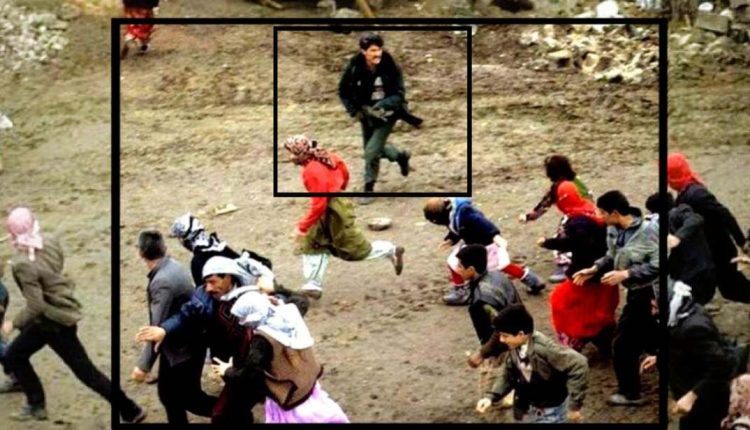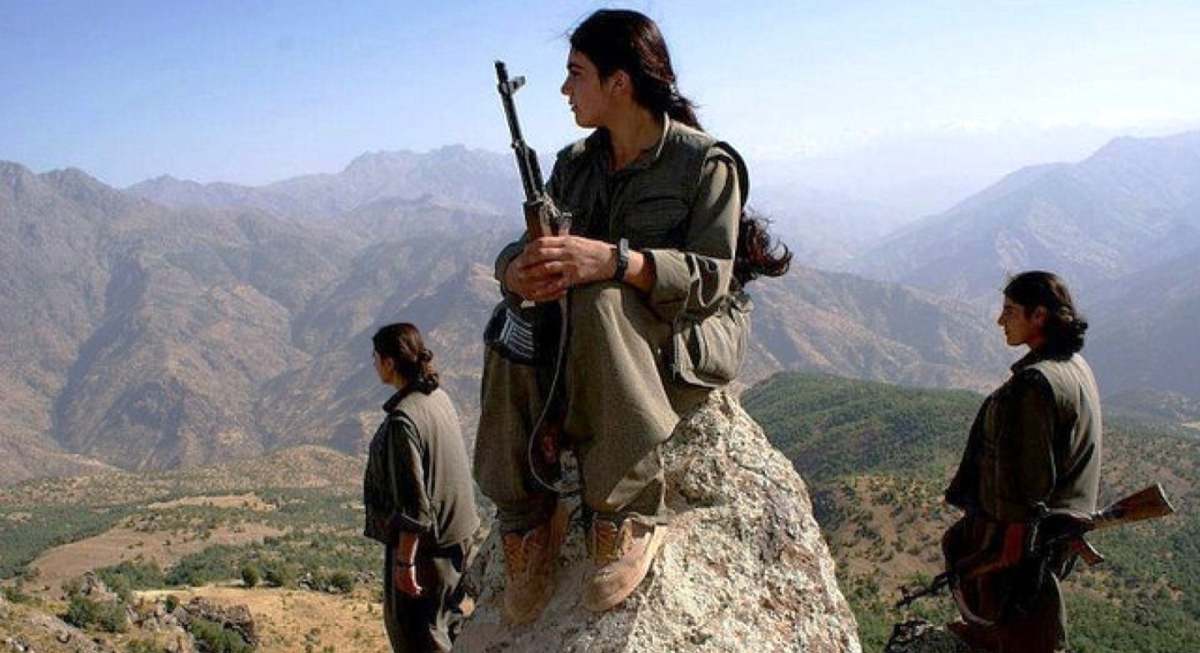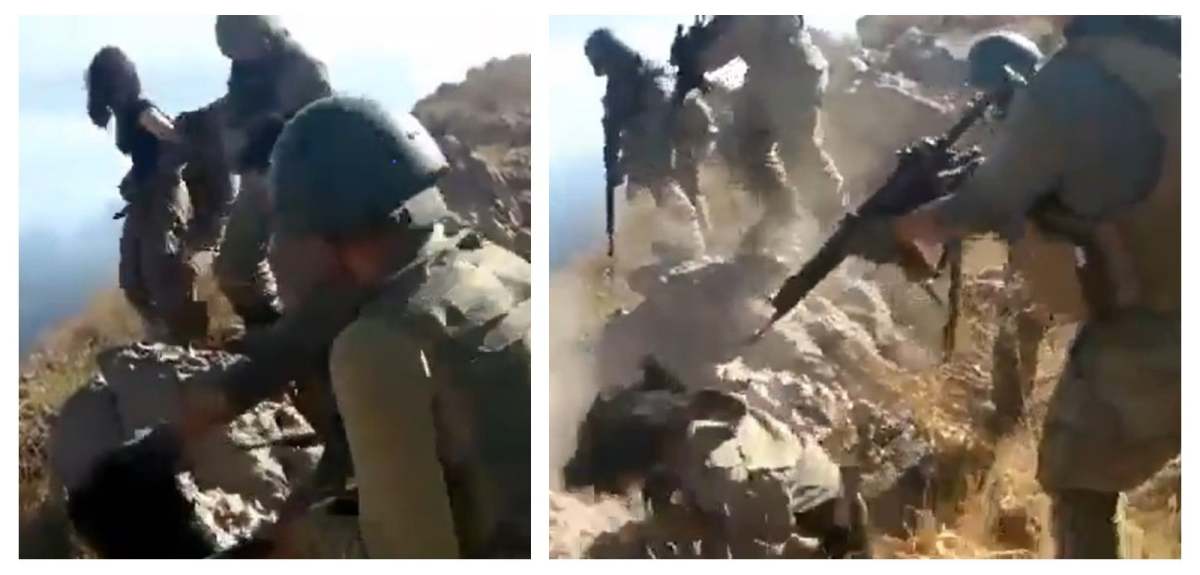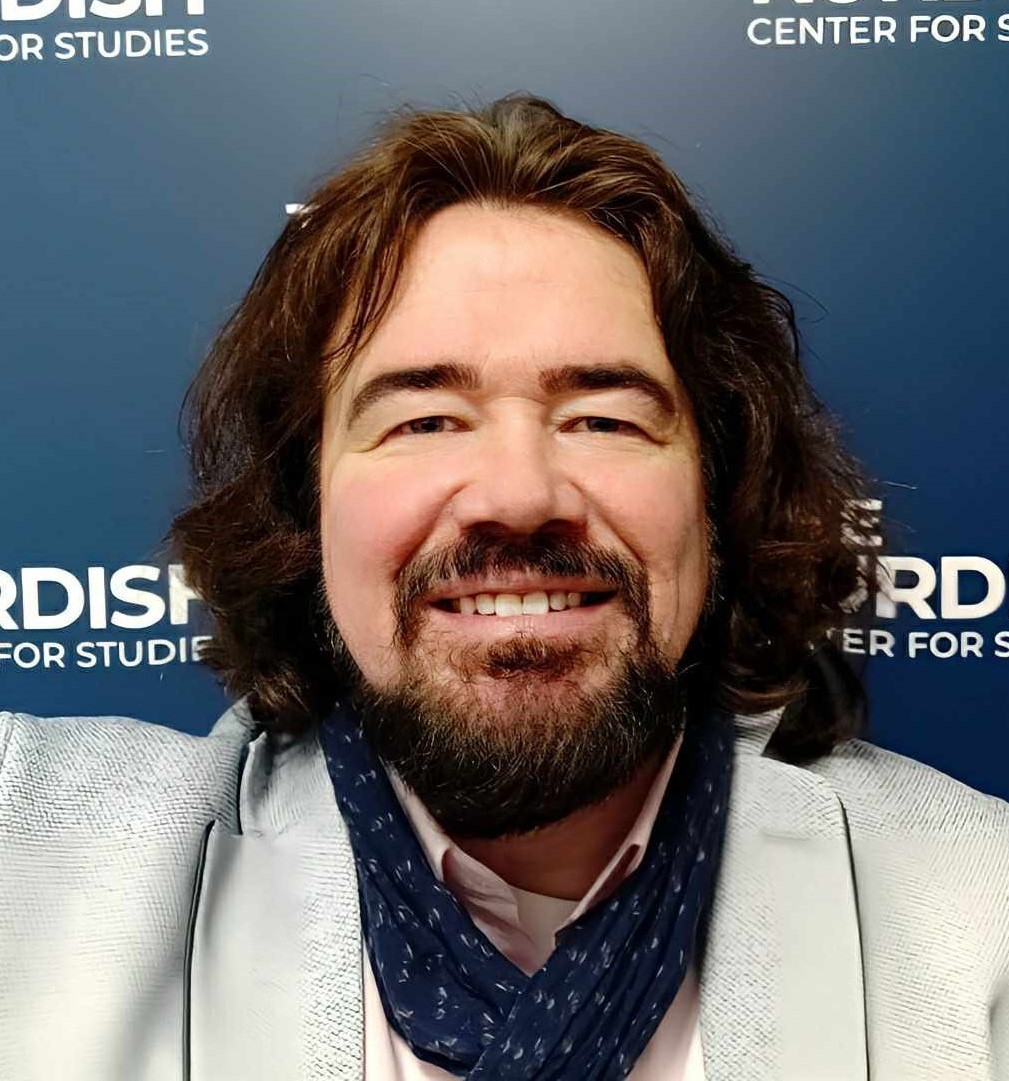40,000 Deaths: Dissecting Turkey’s “Big Lie” Against Kurdistan’s Guerrillas
By Dr. Thoreau Redcrow

With oppressive military occupations, state accusations serve as confessions.
Since 1984, Kurdish guerrillas of the Kurdistan Workers’ Party (PKK) have been fighting an asymmetric resistance war against the Turkish military. Consequently, anyone who has ever read or watched Turkish state media (which at this point is the only press allowed to freely operate in the country) has undoubtedly come across the often-parroted line claiming that the PKK is “responsible” for the deaths of 40,000 people. Variations of this phrase appear at the end of all PKK-related news reports in Turkey, whether they are sycophantic screeds by Daily Sabah or Yeni Şafak, disinformation posing as press releases by Anadolu Agency, or slicky-produced video segments by TRT World. As a result, the robotic repetition of “PKK” and “40,000 deaths” begins to resemble a meditation mantra, where Ankara’s Presidential Palace stenographers seem to be trying to convince themselves of its accuracy more than anything else.
But because indoctrination is like a drug, where you need an increasingly stronger dose to gain the same intoxicating high, Turkey’s media often laces other incendiary elements to their obligatory phrasing on the PKK, such as “terror campaign”, “terrorist organization”, and suggesting that most of those 40,000 deaths were “women, children, and infants.” However, when you investigate the reality behind this number, such as where it came from, who it refers to, and who is culpable, you realize that the truth has been flipped upside down. At that point, it becomes clear that the “40,000” death figure attributed to the PKK—which is often inexplicably echoed by more reputable Western news sources—is a deliberately crafted falsehood, a manipulated and weaponized statistic for the purposes of justifying the continual mass murder of Kurds by the Turkish state. But, to add insult to injury, the victims are then accused of committing homicide in relation to their own deaths.
Peace First Requires Truth
Before the PKK even existed, the renowned Kurdish poet Cigerxwîn (1903-1984) explained the Kurd’s historical position in his 1973 work Who Am I?, authoring the lines:
“I am not blood thirsty, no, I adore peace.
Noble were my ancestors, sincere are my leaders.
We don’t ask for war but demand equality,
but our enemies are the ones who betray and lie.
Friendship I seek and offer my hands to all friendly nations.
Long live Kurdistan; death to the oppressor!”
Such a desire for peace was still evident several decades later in the remarks of the PKK female commander Dilan, who joined the guerrillas after her brother was killed by Turkish security forces and told reporters in 2015: “I don’t like carrying or using a weapon, but do you think as a woman in the Middle East I could survive without one, under these circumstances? It’s a need, not something I relish.”

With regards to the “lies” Cigerxwîn wrote about, it should be noted that it is actually the PKK and their imprisoned leader Abdullah Öcalan who have called for a truth commission, while supposed democracy and US NATO ally Turkey have refused such a request. In their defense, Turkey’s trepidation is justified, as the formation of a truth commission would publicly reveal Ankara’s vast apparatus of death, which has been deployed against the Kurdish people. Any truth commission would unearth all the ways that the Turkish military, secret police, and death squads murdered thousands of Kurds while also burning down over 4,000 Kurdish villages throughout the 1990s. Likewise, all of a sudden, the violence by the PKK (including the excesses they have admitted to and expressed regret for) would be placed in its actual context and begin to look more like self-defense or desperate acts of survival against a depraved enemy with no limit to their cruelty.
This is why the Turkish press always starts or ends any article with the fictitious “PKK death total,” which is used as a qualifier to give the reader the impression that any war crimes by Turkey that are mentioned must have been justified. The obfuscation is not simply a domestic issue in Turkey however, nor a recent phenomenon, as the international Western press has been consistently derelict in their duties since at least the 1990s. Harold Pinter with PEN International described the situation in 1999, by observing how:
“Every time the name of Öcalan occurs in the British press it is accompanied by the figure ‘30,000 dead in the last 14 years.’ The implication is that Öcalan has brought about these deaths. The PKK has certainly killed, and has also committed atrocities, but the overwhelming number of these 30,000 deaths, not to mention widespread mutilation and rape, are the responsibility of the Turkish military.”
With respect to that often-cited number of ‘30,000 deaths’ in 1999—a number which a decade later was usually quoted by the press as 40,000—“the fact that most of the deaths were Kurds is not mentioned”, nor is the fact that the killer in the vast majority of those cases was Turkey, not the PKK.[1] While anti-Kurdish propaganda is to be expected within Turkey, it is acutely peculiar to see Western newspapers repeatedly open or close articles with some variation of the sentence, “The PKK terrorist organization has been fighting a war against Turkey since 1984, in a conflict that has killed 40,000 people,” without any explanation of exactly who is culpable for the vast majority of those deaths. Obviously, your average reader is left with the implicit impression that the ‘terrorists’ must have been the ones who killed most of those 40,000 people and not Turkey. However, with relation to the earlier figure of 30,000 for instance, the Turkish state admitted how they derived that figure and who exactly it was referring to when utilized.
The Birth of a Flexible Number
According to Turkish General Staff Colonel Bülent Dağsali, of the 30,000 at the time in 1999, only 5,238 of those deaths were military personnel considered to be killed by the PKK, a figure which Turkey broke down as: 3,256 conscripted soldiers, 243 officers, 221 noncommissioned officers, 1,115 village guards, and 157 policemen.[2] While it is true that Turkey has been accused of drastically undercounting their own casualties and exaggerating those of Kurdish guerrillas, even when using their own figures for arguments sake, only a total of around 1/6, or 5,000 members of the 30,000, were considered Turkish military victims of the PKK. Likewise, in 2005, Turkish President Süleyman Demirel asserted that from 1984–1999, 23,938 PKK had been killed by Turkish forces, in comparison to his estimate of 5,555 members of the Turkish security forces.[3] Again, based on Turkey’s own claims—whether true or not—the Turkish state was responsible for nearly 5 out of every 6 fatalities.
Although the PKK disputes these figures and says the Turkish casualties are much higher and theirs much lower, that makes little difference to my overall point, which is that when the PKK are mentioned, the impression is always given that they are responsible for killing the 40,000 themselves and not being the victims of 75–80% of that casualty count. Unfortunately, it is just another example of how reality is purposefully skewed to hide what is truly taking place. In the spirit of accuracy, the earlier mentioned sentence could also read something akin to: “The PKK have been fighting a guerrilla war against Turkish occupation since 1984, in a conflict where the state of Turkey claims responsibility for 83% of the reported deaths.”
A further issue calling the accuracy of the 40,000 number into question is the difference in reported PKK death totals by the Turkish Parliament and Gendarmerie (rural police). For example, in 1997, following two large-scale invasions into Southern Kurdistan (north Iraq), the Parliament reported that 3,419 PKK guerrillas were killed, while the gendarmerie said it was 8,234. I should mention one important caveat with relation to alleged PKK casualties: in 1995, Human Rights Watch reported that it was common practice for Turkish soldiers to kill Kurdish civilians and take pictures of their corpses with weapons they carried specifically for staging the events, so that murdered civilians could be displayed to the press as PKK “terrorists.” So, it is not even possible to determine how reliable their definition of “PKK” was. In situations where Turkey could not stage their ‘victories’, they may have just made them up, as during some large-scale operations they would claim unrealistic ratios of guerrillas killed per every soldier they lost. In response to the inflated numbers that Ankara reports on slain PKK, in January 2016, a human rights activist in Amed told the Crisis Group: “Our cities in the region would be flooded with corpses and we would constantly hold funerals if the number the state announces for PKK members killed was correct.”
Why Lying Requires a Good Memory
Nonetheless, with regards to the cumulative figure of all deaths, the scholar Noah Arjomand’s research on the issue outlines how the figure itself has jumped around over the years. For instance, in 1997, Turkish Prime Minister Süleyman Demirel claimed 37,000 people had been killed; in 2005, then Prime Minister Tayyip Erdoğan said the PKK had killed 40,000; in 2008, the chief of general staff said it was 44,042; while in 2013, a parliamentary commission report estimated the death toll at 35,576. A basic glance at those numbers shows that somehow, from 1997 to 2013, following sixteen years of armed conflict, the total number of deaths magically decreased by 1,424 people. A feat only surpassed by the ‘miracle’ that in the five years from 2008 to 2013, 8,466 people were apparently resurrected from the dead.
As Michael Rubin of the American Enterprise Institute argues:
“Policymakers should take the 40,000 number with a grain of salt, though, for two reasons: First, it includes all victims of the PKK insurgency, including villagers and other civilians killed by the Turkish Army. Second, a survey of newspapers going back to the beginning of the insurgency suggest the Turks crafted the figure out of whole cloth.”
In a rundown of the various press figures given, Rubin shows how the number has shifted from 4,500 in August of 1992 (Toronto Star), to 15,000 in April 1995 (Associated Press), and to 17,500 in August 1995 (Irish Times). Then in 1998, the number suddenly jumped to 38,000 based on a statement by Turkish military official Erol Ozkasmak to a military exhibition where he claimed, “The PKK is coming to the end of the road.” The fact that twenty-six years later, the PKK is arguably larger and stronger than ever, tells you most of what you need to know about Mr. Ozkasmak’s credibility, but I digress.
Nevertheless, once that 38,000 figure was put into circulation, Agence France-Presse repeated it in an April 1998 article, allowing it to take on a life of its own. Curiously, the same article also quoted Aydin Arslan, the governor of the occupied Kurdish areas in Turkey, contradicting that figure by claiming that 9,100 people had been killed from 1984 to 1998. Still, only one month later, the German news agency Deutsche Presse-Agentur cited “official figures,” claiming the total was now 40,000 dead. But again, even a total number does not answer who the dead are or which side they were killed by? The reason that important detail was left out of the equation is because most of the victims were killed by Turkey.
More recently, research by the Crisis Group shows that from 2015 to March 2024, the death totals available in open sourcing amounted to 4,612 PKK, 1,479 Turkish state security forces, 622 civilians, and 226 with unknown affiliation, for a total of 6,939 people. However, even though Turkish state forces make up less than a quarter of the total and are responsible, by their own admission for killing the majority of that total, Turkey pins the entire nearly 7,000-person death count on the PKK. Though, curiously, they have not updated their mythical ‘40,000’ number from prior to 2015 to ‘47,000’ now in 2024, further showing the absurdity of utilizing this figure. Which is exactly why academics and media should not just be blindly regurgitating figures released by Turkey, metaphorically letting the serial killer assign blame for their own body count. Then again, that would be fitting, considering a 1992 report by Human Rights Watch found that:
“Instead of attempting to capture, question and indict people suspected of illegal activity, Turkish security forces killed suspects in house raids, thus acting as investigator, judge, jury and executioner.”

When Fighting Terrorism Only Requires a Mirror
“Kurds were being killed for fun. We blew up a little girl because she wouldn’t tell us the location of PKK fighters. We also saw a fourteen-year-old girl herding sheep, my commander ordered us to shoot her, we rejected. He picked up a gun and killed her. When I go to sleep, I can still hear the scream of the little Kurdish girl we blew up. She was begging us in Kurdish. We didn’t understand.”
— Sirac Kilic, an ex-Turkish soldier who served in 1994
Since the 1970s, the European Court of Human Rights has condemned Turkey for thousands of human rights abuses against the Kurdish people. The judgments are related to systematic executions of Kurdish civilians, forced recruitment, torture, rape, forced displacements, thousands of destroyed villages, arbitrary arrests, and murdered or disappeared Kurdish journalists. As for the Turkish state, a crucial component to maintaining this collective sociopathology is the specious—though powerfully intoxicating—notion that the Turkish Army is merely killing “terrorists”, who must be destroyed because of the “terror” they inflict upon the population. However, since the PKK generally carried out their armed struggle while attempting to avoid civilian casualties against those they were trying to win support from, the Turkish state often carried out mass atrocities themselves, which they then falsely blamed the PKK for in order to justify their ‘terrorist’ designation. As Paul White explains in his work The PKK: Coming Down from the Mountains:
“The Turkish state itself, have consistently alleged that the PKK during those two decades [80s-90s] was guilty of perpetrating widespread atrocities against civilians, including liquidating entire villages. As the present author has shown, several of these acts were actually perpetrated by Turkish Special Forces. One well-known case is that of the massacre of 12 July 1993, in which at least twenty-six villagers (including fourteen children) were murdered at Giyadîn (Diyadin) village in Van province.”[4]
In the same year, Turkish special forces also burned alive Mehmet Ogut, his pregnant wife, and their seven children (ages 3-13) in the family’s home near Mûş. Following the mass murder, the state blamed the PKK and refused to investigate the case for seventeen years, until public pressure forced them to in 2014, resulting in thirteen of the perpetrators being convicted. Turkey’s behavior was similar a year later, during what became known as the Kuşkonar and Koçağılı massacre. In this war crime on March 26, 1994, Turkish F-16’s and helicopters bombed two Kurdish villages and murdered 38 civilians. Initially, Turkey blamed the PKK and disseminated pictures of the dead children in the press. However, once the truth was revealed, the European Court of Human Rights condemned Turkey to pay €2.3 million to the families of the victims.
The aforementioned Professor White further notes how “The Turkish state’s portrayal of the PKK as wantonly violent terrorists was facilitated by the rigid censorship of events in Kurdistan and the obliging attitude of most of the Turkish press.”[5] Likewise, security expert Gareth H. Jenkins at The Institute for Security and Development Policy explains how the Kurd’s claim that the Turkish Government was “recruiting Mafia hit men, running death squads and releasing convicted terrorists to conduct extra-judicial executions, now seemed to be an irrefutable reality.”[6] For his part, the academic Serdar Kaya cites the activities of the notorious Turkish death squad JİTEM (Gendarmerie Intelligence and Counter-terror Unit) as “allegedly responsible for thousands of extrajudicial executions and assassinations of PKK sympathizers and supporters.”[7]
Because it takes a large civilian body count if you are going to continually accuse a group of “terrorism” to justify your occupation, the Turkish state decided that in the absence of the PKK giving them one, they would not only create their own, but in an extreme act of audacity, blame the PKK for the Kurdish sympathizers they continuously assassinated. A member of the Human Rights Association in Amed described this practice in the mid-1990s, recalling how:
“Approximately 98% of the people killed by unidentified persons have served prison sentences [for Kurdish resistance] or were thought to be supporters of the PKK. We do not believe that the PKK has any reason to kill them. There is a ‘Hizbollah’ here, not like the one in Lebanon, but established by the state. We can show you some of the killers walking down the street in Diyarbakir (Amed) when they should be in jail. Just four days ago an accountant friend of mine was killed just seventy meters away from a police station.”[8]
As the following remarks show, there indeed were people committing terrifying acts in occupied Kurdish areas, such as Turkish commandoes massacring villagers, JİTEM hitmen operating with kill lists, and Islamist anti-guerrilla Hizbulkontra openly killing PKK supporters with Ankara’s blessing, but somehow all of these death totals were being added to the ever-flexible “40,000” figure and blamed on the Kurdish resistance.
An issue of Foreign Affairs from December 2000 addressed this by quoting former French ambassador to Turkey Eric Rouleau, who stated:
“According to the Ministry of Justice, in addition to the 35,000 people killed in military campaigns, 17,500 were assassinated between 1984, when the conflict began, and 1998. An additional 1,000 people were reportedly assassinated in the first nine months of 1999. According to the Turkish press, the authors of these crimes, none of whom have been arrested, belong to groups of mercenaries working either directly or indirectly for the security agencies.”
Turkey’s Goebbelsian Big Lie
Adolf Hitler coined the phrase “Big Lie” (große Lüge) in Mein Kampf (1925) to refer to a gross distortion of the truth as a means of political propaganda. His argument was that people were inclined to believe colossal lies because they find it hard to comprehend that someone would so brazenly distort the truth. Relatedly, American psychoanalyst Walter Charles Langer’s 1943 psychological profile of Adolf Hitler for the US Office of Strategic Services, described the Führer’s use of the Big Lie as follows:
“His primary rules were: never allow the public to cool off; never admit a fault or wrong; never concede that there may be some good in your enemy; never leave room for alternatives; never accept blame; concentrate on one enemy at a time and blame him for everything that goes wrong; people will believe a big lie sooner than a little one; and if you repeat it frequently enough people will sooner or later believe it.”
It is hard to read these words and not imagine the Turkish dictator Erdoğan’s obsessive scapegoating of the Kurds and frequent blaming of the PKK for all of his own government’s failures. And within that process, the repetitive Big Lie is the false claim that the PKK are responsible for 40,000 deaths. Moreover, there is an often-cited apocryphal quote attributed to Nazi Propaganda Minister Joseph Goebbels (though there is no record he ever said it), which perfectly encapsulates the way that Turkey deploys its Big Lie regarding the PKK death count. It goes as follows:
“If you tell a lie big enough and keep repeating it, people will eventually come to believe it. The lie can be maintained only for such time as the State can shield the people from the political, economic and/or military consequences of the lie. It thus becomes vitally important for the State to use all of its powers to repress dissent, for the truth is the mortal enemy of the lie, and thus by extension, the truth is the greatest enemy of the State.”
In Turkey, where Kurds are often arrested and given long prison sentences for “denigrating Turkishness,” which typically means accurately reporting on the crimes the state is committing or has committed throughout history, those words ring so prescient as to be prophetic.

It is worth mentioning that one reason why analogies involving Nazi Germany can be revelatory and instructive, is because they represent one of the few historical events where the majority of people can deploy moral clarity. For example, it is hard for most people to imagine a concept like “terrorism” being committed against the Nazis, as most people recognize their intended victims were justified in using any means necessary against such a monstrosity. Such lucidity, in particular with regards to the righteousness of resisting one’s extermination with violence, can be a helpful ingredient in producing the necessary cognitive dissonance one requires to realize that in the battle of “good versus evil,” their side may actually be the “bad guys.”
With that in mind, imagine for a second, that following the 1943 Warsaw Ghetto uprising against the Nazis, the Third Reich took the death totals of both sides from the month of fighting—the 56,000 killed or captured Jews sent to death camps by the Gestapo and the 300 German soldiers that the Jewish resistance estimates they killed in self-defense—and combined them into one number: 56,300. Now, continue on with this exercise and imagine that the Nazis then created a mandatory line that appeared in every Der Stürmer article stating: “In its 1-month terror uprising against the German Fatherland, the Jewish separatists listed as a terrorist organization by the Reichstag, have been responsible for the deaths of more than 56,300 people, including women, children, and infants.”
It is not hard to see that such an action would be such a blatant distortion of reality that the reader is almost embarrassed by its breathtaking shamelessness. But this is essentially what the Turkish state media continues to do every day with regards to the PKK. So, the next time you read a news source citing the “PKK death total” as if it has any basis in reality, do them a favor and send them a link to this article, so they might stop embarrassing themselves and those of us who know the real history.
References
(Offline, as online sources are linked throughout.)
[1] Yildiz, K. (2005). The Kurds in Turkey: EU Accession and Human Rights. p. 10
[2] Mater, N. (2005). Voices from the Front: Turkish Soldiers on the War with Kurdish Guerrillas. p. 309
[3] Mater, N. (2005). Voices from the Front: Turkish Soldiers on the War with Kurdish Guerrillas. p. 309
[4] White, P. (2015). The PKK: Coming Down from the Mountains. p. 42
[5] White, P. (2015). The PKK: Coming Down from the Mountains. p. 43
[6] Eccarius-Kelly, V. (2010). The Militant Kurds: A Dual Strategy for Freedom. p. 147
[7] White, P. (2015). The PKK: Coming Down from the Mountains. p. 110
[8] Rugman, J. & Hutchings, R. (1996). Ataturk’s Children: Turkey and the Kurds. p. 89



Comments are closed.